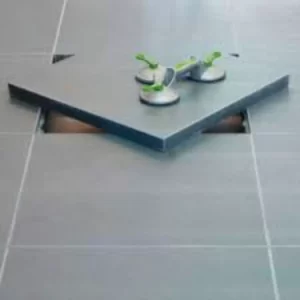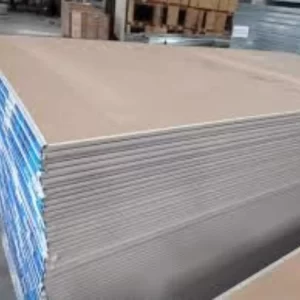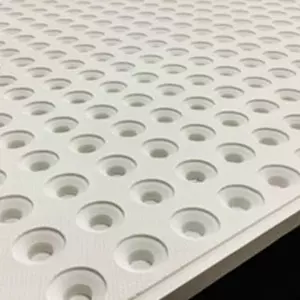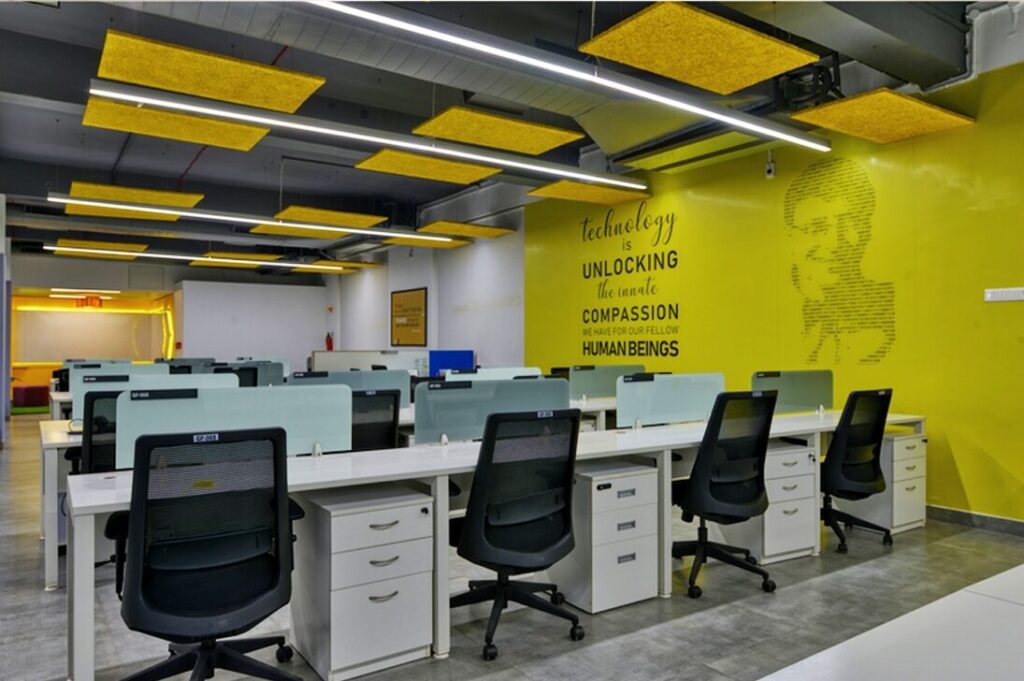Types of Raised Access Flooring Panels
Introduction
Raised access flooring is a modular flooring system consisting of panels supported by an underlying structure, creating a void or cavity beneath the floor surface. This void allows for the routing of electrical, data, and HVAC systems, ensuring a clean and organized environment. Raised access flooring is commonly used in office buildings, data centers, command centers, and other facilities where infrastructure flexibility is essential.

2. Benefits of Raised Access Flooring
Before delving into the types of raised access flooring panels, let’s take a moment to understand the key benefits they offer:
- Flexibility: Raised access flooring enables easy reconfiguration of the workspace layout, accommodating changes in technology and infrastructure requirements.
- Accessibility: The removable panels provide quick and convenient access to the systems beneath, facilitating maintenance, repairs, and upgrades.
- Improved Airflow: The void created by the raised access flooring system allows for proper airflow, contributing to efficient HVAC performance and cooling.
- Cable Management: Cables and wires can be neatly organized within the cavity, reducing the risk of tripping hazards and simplifying troubleshooting.
- Noise Reduction: Raised access flooring helps minimize noise transmission by acting as a barrier between the floor and the space below.
- Aesthetics: The flooring panels come in various finishes, allowing customization to match the overall design and aesthetics of the space.
3. Cementitious Raised Access Flooring Panels
Cementitious raised access flooring panels are made of a mixture of cement, aggregate, and other additives. They are known for their high strength, durability, and fire resistance. These panels are commonly used in areas where heavy static loads are expected, such as server rooms and equipment storage areas.
4. Steel Encapsulated Raised Access Flooring Panels
Steel encapsulated raised access flooring panels consist of a steel shell filled with a lightweight cementitious core. This type of panel offers excellent structural integrity and load-bearing capacity. It is often utilized in data centers, control rooms, and areas with high foot traffic.
5. Woodcore Raised Access Flooring Panels
Woodcore raised access flooring panels have a core made of high-density chipboard or particleboard, enclosed within a galvanized steel shell. They strike a balance between strength and weight, making them suitable for general office spaces, computer rooms, and call centers.
6. Calcium Sulphate Raised Access Flooring Panels
Calcium sulphate raised access flooring panels feature a gypsum-based core that offers exceptional fire resistance and acoustic performance. These panels are commonly used in areas that require enhanced fire protection, such as server rooms, control rooms, and laboratories.
7. Aluminum Raised Access Flooring Panels
Aluminum raised access flooring panels are lightweight yet sturdy, making them ideal for applications where weight reduction is a priority. They are often used in aerospace facilities, cleanrooms, and areas requiring static dissipation.
8. Glass Raised Access Flooring Panels
Glass raised access flooring panels add a touch of elegance and transparency to the workspace. They are typically used in lobbies, showrooms, and areas where aesthetics and visibility are essential.
9. Hybrid Raised Access Flooring Panels
Hybrid raised access flooring panels combine the advantages of different materials, offering unique properties tailored to specific requirements. These panels can incorporate a combination of steel, wood, or other materials, providing a versatile solution for various environments.
10. Comparing Different Types of Raised Access Flooring Panels
When selecting the most suitable raised access flooring panels, it is essential to consider factors such as load capacity, fire resistance, acoustic performance, and budget. Each type of panel has its own strengths and limitations, and careful evaluation is necessary to determine the best fit for the intended application.
11. Factors to Consider When Choosing Raised Access Flooring Panels
Several factors should be taken into account when choosing raised access flooring panels:
- Load Requirements: Evaluate the anticipated static and dynamic load requirements to ensure the panels can withstand the expected weight.
- Fire Resistance: Consider the fire rating of the panels and their suitability for fire-sensitive areas.
- Acoustic Performance: Assess the acoustic properties of the panels, especially in environments where noise reduction is crucial.
- Static Control: If electrostatic discharge (ESD) protection is necessary, select panels that provide appropriate static dissipation or conductive properties.
- Environmental Sustainability: Look for panels made from recycled materials or those that can be recycled at the end of their lifespan.
12. Installation and Maintenance of Raised Access Flooring Panels
Proper installation and regular maintenance are essential for the optimal performance and longevity of raised access flooring systems. Qualified professionals should handle the installation process, ensuring proper alignment, stability, and connection to the substructure. Regular inspections, cleaning, and maintenance should be performed to identify and address any issues promptly.
13. Applications of Raised Access Flooring
Raised access flooring finds applications in various sectors, including:
- Office Buildings: Raised access flooring allows for easy reconfiguration of office spaces and efficient cable management.
- Data Centers: It provides a flexible infrastructure for data center layouts, ensuring efficient cooling and cable organization.
- Control Rooms: Raised access flooring facilitates the integration of complex control systems and provides accessibility for maintenance and upgrades.
- Educational Institutions: It offers flexibility in classrooms and computer labs for accommodating changing technology needs.
- Healthcare Facilities: Raised access flooring allows for the integration of medical equipment, wiring, and services, simplifying maintenance and modifications.
14. Future Trends in Raised Access Flooring
The raised access flooring industry is continually evolving to meet the changing needs of modern workplaces. Some future trends include:
- Smart Integration: Integration of IoT sensors and smart technologies within raised access flooring for real-time monitoring and data analysis.
- Wireless Charging: Development of wireless charging capabilities embedded within raised access flooring for increased convenience and flexibility.
- Environmental Sustainability: Greater emphasis on environmentally friendly materials and energy-efficient solutions in raised access flooring systems.
- Modularity and Customization: Enhanced modularity and customization options to cater to unique design requirements and specific applications.
Conclusion – Types of Raised Access Flooring Panels
Raised access flooring panels offer a versatile solution for managing infrastructure in commercial buildings. With various types available, including cementitious, steel encapsulated, woodcore, calcium sulphate, aluminum, glass, and hybrid panels, there is a suitable option for every application. When selecting raised access flooring panels, consider factors such as load capacity, fire resistance, acoustic performance, and static control. Proper installation and maintenance are crucial for optimal performance, and the future of raised access flooring holds promising trends towards smart integration, wireless charging, environmental sustainability, and enhanced modularity.
Frequently Asked Question- Types of Raised Access Flooring Panels
- Are raised access flooring panels easy to install?
Answer: Yes, raised access flooring panels are designed for easy installation. Qualified professionals should handle the installation process to ensure proper alignment and stability.
- Can raised access flooring panels support heavy equipment?
Answer: Yes, certain types of raised access flooring panels, such as steel encapsulated and cementitious panels, are capable of supporting heavy static loads commonly found in server rooms and equipment storage areas.
- Can raised access flooring panels be customized to match the overall design of a space?
Answer: Yes, raised access flooring panels come in various finishes and can be customized to match the aesthetics and design requirements of the space.
- How often should raised access flooring panels be inspected and maintained?
Answer: Regular inspections, cleaning, and maintenance should be performed to ensure the optimal performance and longevity of raised access flooring systems. The frequency of inspections may vary depending on the usage and specific requirements of the facility.
- What are the environmental benefits of raised access flooring panels?
Answer: Raised access flooring panels can contribute to environmental sustainability by using recycled materials or being recyclable themselves at the end of their lifespan. Additionally, they provide a flexible infrastructure that allows for future modifications and reduces material waste associated with traditional fixed flooring systems.
Other Products

Gypsum boards

Magnesium oxide board

Grg ceiling tiles
Contact Us
Mobile: +919008400701 / 705
Email: sales@jayswalgroup.com

Visit Us
Address:
#6, 10th B Cross, Jayswal Center, KHB Main Road, Kaveri Nagar, Kanakanagar, RT Nagar, Bangalore – 560032, Karnataka, India.
Other Websites: